Toshiba Ships dynaEdge AR Smart Glasses Powered by Intel Core M & Windows 10 Pro
by Anton Shilov on May 22, 2018 5:45 PM EST- Posted in
- Peripherals
- Intel
- Toshiba
- Core M
- Windows 10
- AR
- dynaEdge AR
- Smart Glasses
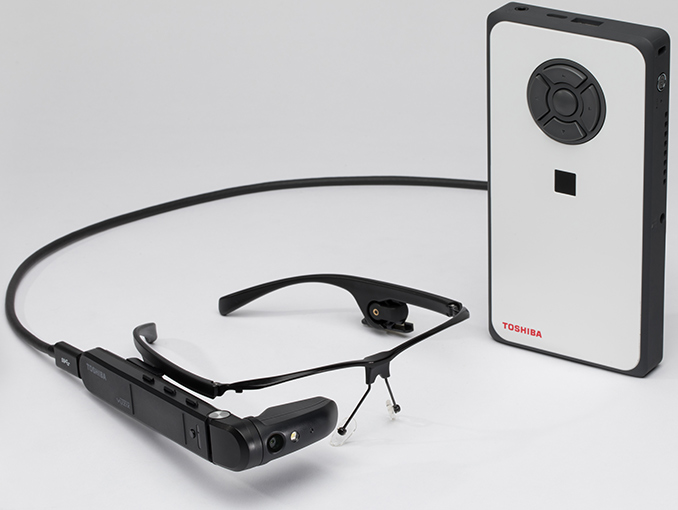
Toshiba this month started selling its first wearable AR smart glasses designed for business and industrial applications. The Toshiba dynaEdge AR is a highly-integrated solution comprising of a head mounted display, a PC module, and software that are designed to work in concert offering out-of-box functionality and supporting custom applications. From some points of view, Toshiba’s dynaEdge AR is a realization of Microsoft’s HoloLens concept.
Toshiba’s dynaEdge AR smart glasses solution consists of two key pieces — the Toshiba AR100 HMD and the Toshiba dynaEdge DE-100 miniature PC interconnected using a USB Type-C cable. The HMD is outfitted with a small 0.26-inch screen featuring a 640×360 resolution that can display content with a 1280×720 resolution, a 5 MP camera with a flash, a speaker, two microphones, and a variety of sensors (accelerometer, gyro, ambient light sensor, proximity sensor, compass, and GPS). The HMD has three control buttons and a touchpad.
As for the miniature PC, the Toshiba dynaEdge DE-100 is based on Intel’s Core m5/m7 ‘Skylake-Y’ ULV SoC that is outfitted with 4 – 16 GB of LPDDR3 memory, and a 128 – 512 GB M.2 SSD. The system features Intel’s Wireless-AC 8260 802.11ac Wi-Fi + Bluetooth 4.2 controller, a USB 3.1 Gen 1 Type-C port, a USB 3.0 Type-A header, a microSD slot, and a TRRS audio connector. To ensure proper security, the dynaEdge DE-100 is equipped with a TPM 2.0 module as well as a fingerprint reader. Finally, the PC has five navigation buttons.
The augmented reality glasses from Toshiba are aimed at enterprise customers that will use them in various areas, including manufacturing, services and other. Out of box, the dynaEdge AR smart glasses can take pictures, record and stream live video, open documents, communicate using Skype and do typical operations that any Windows 10-based computers can perform. Meanwhile, Toshiba encourages develops to build application-specific software for its smart glasses.
Toshiba’s dynaEdge AR smart glasses (with the miniature PC and the Vision DE Suite) solutions are available directly from Toshiba’s Client Solutions Division (CSD) starting at $1,900 (with an entry-level SoC/RAM/SSD configuration). Interested parties are advised to contact their sales representatives of Toshiba, or contact the company at smartglasses@toshiba.com. In addition to the dynaEdge AR, Toshiba also sells various accessors for the devices, including glasses, headbands, helmet mounts, safety frames, and other.
Those who want to develop products based on Toshiba’s dynaEdge AR smart glasses can obtain appropriate development kits (hardware and software) for $2,400 – $2,900 as well as optional accessories.
Related Reading:
- Vuzik's New AR Glasses Actually Look Like Glasses
- Intel EOLs Atom Chip Used for Microsoft HoloLens
- Hololens Round Two: Augmented Reality At Build 2016
- Microsoft Reveals Additional Details About HoloLens and Begins to Take Pre-Orders
- Volvo Partners With Microsoft To Bring HoloLens To Automotive Design And Showcasing
- Microsoft Hololens Hands-On
Source: Toshiba


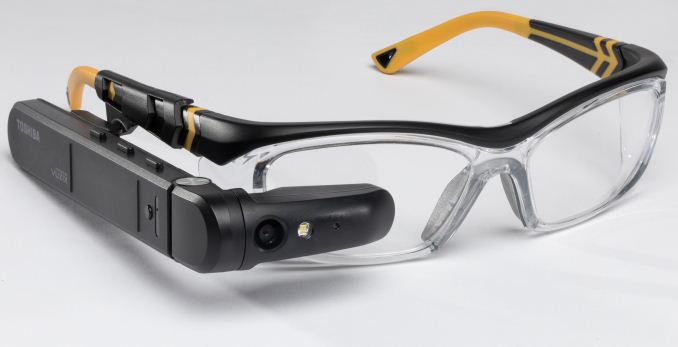
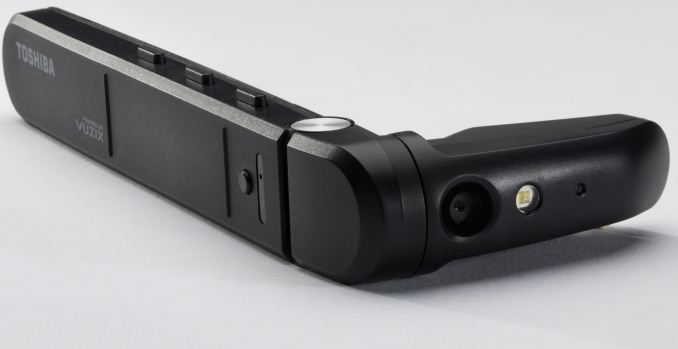
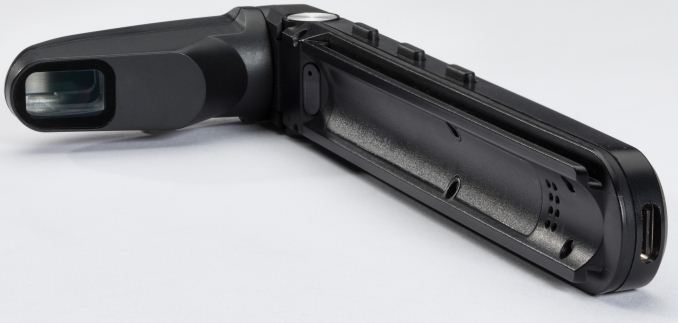
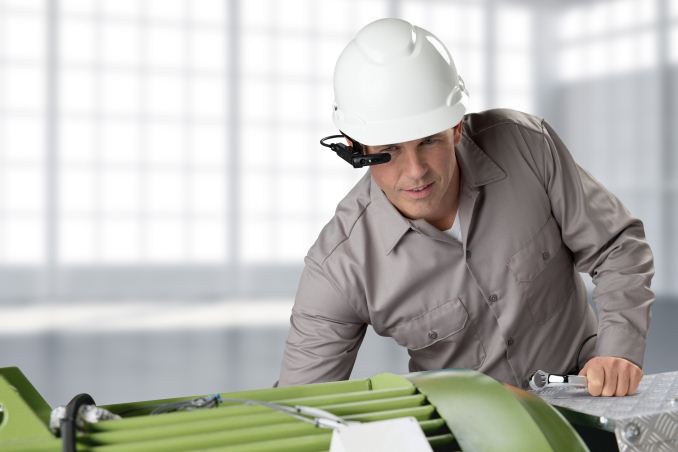
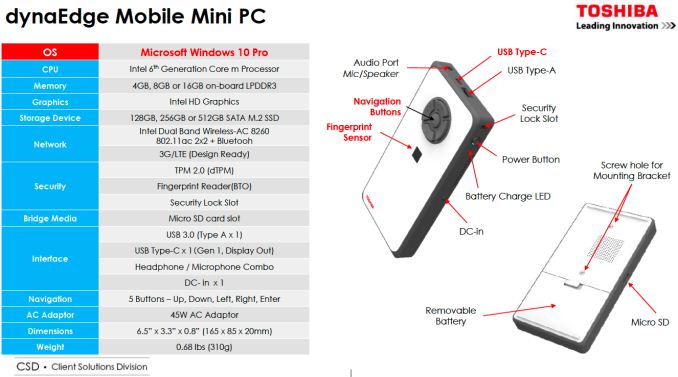








21 Comments
View All Comments
ಬುಲ್ವಿಂಕಲ್ ಜೆ ಮೂಸ್ - Tuesday, May 22, 2018 - link
640 X 360 resolution.....What year is this?
69369369 - Tuesday, May 22, 2018 - link
2018ಬುಲ್ವಿಂಕಲ್ ಜೆ ಮೂಸ್ - Tuesday, May 22, 2018 - link
Probably streams 4K video to a backend system like Amazons new product which then sends text to this low rez headset > ARREST THAT MAN!BleepingComputer: Amazon Is Selling Facial Recognition Software to US Law Enforcement
ಬುಲ್ವಿಂಕಲ್ ಜೆ ಮೂಸ್ - Tuesday, May 22, 2018 - link
A red dot on whoever you are looking at = Arrest Him!Yellow dot = Watch Him!
Green = Ignore that Undercover Gov't Agent
Shouldn't be too hard to program, Right China?
ಬುಲ್ವಿಂಕಲ್ ಜೆ ಮೂಸ್ - Tuesday, May 22, 2018 - link
Just one question....Would Trumps Russian contact be Red, Yellow or Green?
trivik12 - Tuesday, May 22, 2018 - link
Screen size is 0.26 inches. even 720pm is overkill.mode_13h - Tuesday, May 22, 2018 - link
Physical size is irrelevant, at such distances. You need to look at the FoV it covers.mr_tawan - Wednesday, May 23, 2018 - link
My dump guess would be... at most 1/4 of the what an eye see.HStewart - Tuesday, May 22, 2018 - link
I think one needs to take in account the size of screen which is 1/4 in using math I came up what this would be same on 4x6 in screen - which is about 15,000 to 8500.Of course one's eye is closer than one would be at your phone
boeush - Tuesday, May 22, 2018 - link
"a small 0.26-inch screen featuring a 640×360 resolution that can display content with a 1280×720 resolution"Ummm... huh?